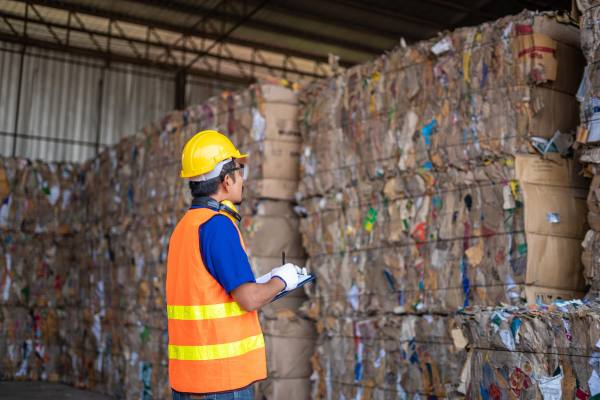For decades, building material companies have shredded old newspapers to create cellulose insulation. But as newspapers have declined, the cellulose insulation industry has found itself in a bind, chasing after dwindling supplies of raw material.
As old newsprint has become harder to find, there’s been another paper-based product on the rise: corrugated cardboard. People have increasingly turned to e-commerce, and the amount of cardboard boxes has crept steadily upward. Every year, as much as 50 million tons of the material land in waste and recycling bins.
Cardboard would seem like a perfect, paper-based solution to the insulation industry’s short supply, except there’s one problem: Corrugated boxes are riddled with contaminants like plastic tape, shipping labels and even metal staples. Transforming it into insulation is far more challenging than newsprint ever was. Yet one startup, CleanFiber, anticipated the shift and has been working on the problem for years.
To date, CleanFiber has been able to produce enough insulation for about 20,000 single-family homes. But CEO Jonathan Strimling knew that the company would have to stretch beyond its initial factory in Buffalo, New York, if it were to become more than an afterthought. The insulation market in the U.S. is dominated by a handful of large players and is worth $12.5 billion, according to Grand View Research.
Strimling also knew that he and his team would need more capital to expand. They last raised a $10 million Series A in 2022 using a creative mix of equity and debt to get the Buffalo plant running at full steam. But a nationwide expansion would require a much larger war chest.
Fortunately, the company had been courting Spring Lane Capital, a sustainability-focused private equity firm, for over a decade. The firm had been watching CleanFiber’s progress and, happy with the numbers the startup was posting, decided to lead a $28 million Series B that also included a $31.5 million project financing facility, TechCrunch has exclusively learned. Spring Lane was joined by Ahlström Invest, AXA Investment Managers, Climate Innovation Capital and Tokyu Construction/Global Brain.
“It puts us in a very, very strong position to roll out nationally,” Strimling told TechCrunch.
Using an entirely new process to transform a different feedstock into a drop-in replacement for existing cellulose insulation was one challenge the company faced when developing its product. It couldn’t cost any more, and it had to perform as well or better for the installers who deal with it on a daily basis.
CleanFiber has been selling its bales at market prices while refining its production process. Strimling didn’t disclose whether the company is making the product profitably yet, but he did say that CleanFiber has been able to “bring the marginal cost of production down a very, very significant curve.”
With a first-of-its-kind plant built and operational, CleanFiber has been able to traverse one of the most treacherous parts of the valley of death that often claims startups trying to commercialize a new technology. Building new additional factories won’t be a walk in the park, but it should get easier with each subsequent one. Plus, Strimling points out that more stringent building codes mean that new homes require more insulation than ever before. In other words, CleanFiber doesn’t need established players to lose for it to win.
